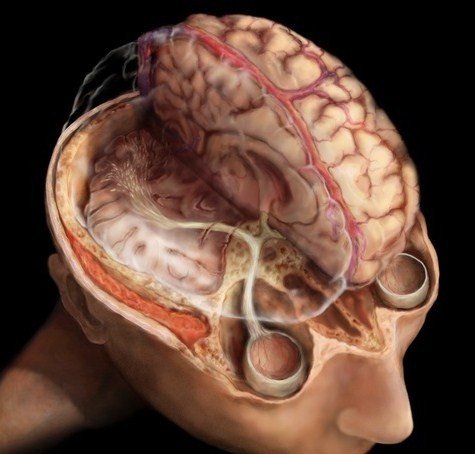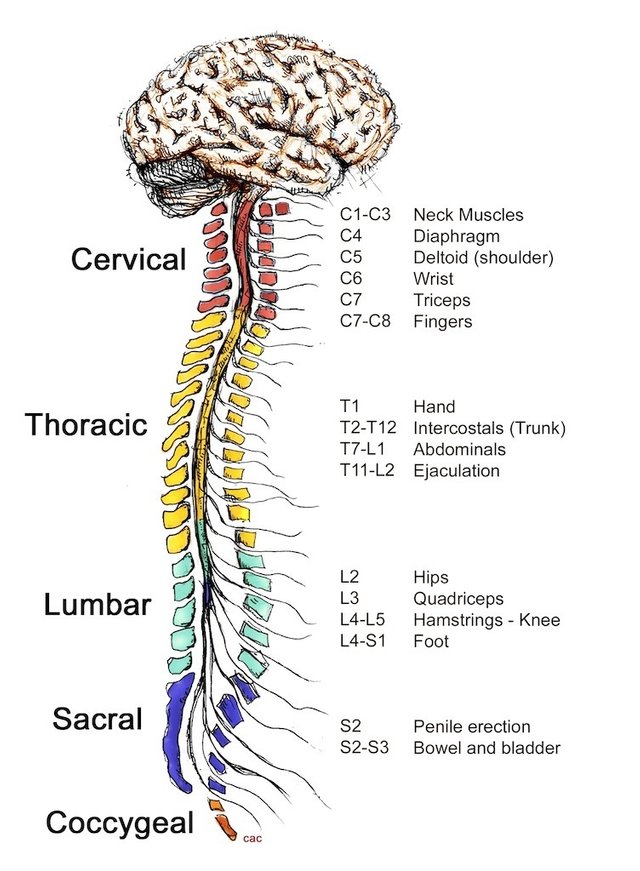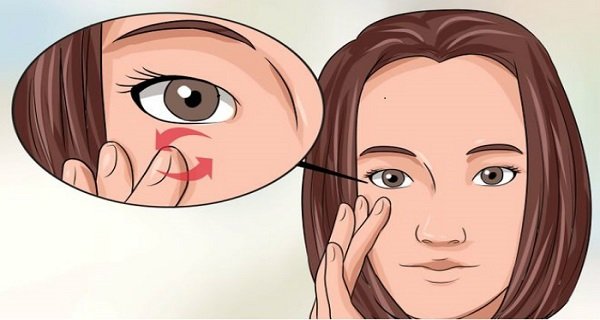How the eyelid twitch relates with the Nervous system...
Introduction
As I was going about my usual chore, I experienced a sharp twitch on my upper right eyelid. The twitch became very uncontrolled, but I could recall a time the traditional people would relate such incidents to superstition; is it true? Same question I ask myself; I tend to believe that because it favoured what they say- that on the right eye it meant that something good is going to happen and the opposite is the case on the left eyelid. Will I think and reason like the traditional people? I wonder.
In relating;
- The nervous system and the eyelid twitch:
In man, awareness of the environment is one of the characteristics that distinguishes living matter from non living matter and this awareness comes through the sense organs located mainly in the head. Because sense organs receives impulses/ stimulus from the outside world and sends this impulses/ stimulus to the brain as nerve impulse, we can rightly say that it is the brain that really sees, hears and tastes as it interprets impulses from the eye as sight, from the ears as sound and from the tongue as taste.
The sense organs alerts us by the mechanism of passing impulse along a nerve as the brain and spinal cord does the work of interpretation which make up the Central Nervous System. Like the sense organs the central nervous system is linked also with all muscles and glands by means of fibres enclosed in a sheath each one made up of many fibres looking like a tough white glistening thread.
The nerve that links all parts of the body to the central nervous system is known as the peripheral nervous system.
The Brain - being the centre of the central nervous system has subdivisions which are the fore brain, the mid brain and the hind brain.
- Fore-brain; as the name implies receives first all sensory impulses through the olfactory lobes. The fore-brain carries another part called the cerebrum which is responsible for all voluntary movements which involves the limbs, trunk, face and speech. This part controls the functioning of glands and muscles.
- Mid brain; attributing the eye-twitch to this part of the brain is seen ideal because of the presence of the optic nerves which is responsible for receiving impulses from the eye through the optic nerves hence controlling the sense of sight.
- Hind brain; as of the case in the mid brain, the hind-brain too has a vote in the eye twitch as the cerebellum which is present here controls all subconscious activities; not only does it control the subconscious activity of the body, it coordinates all muscular activity, maintains body posture and balance and receives impulses from the skin as well as the auditory organs. Another part of the hind brain is the medulla oblongata- this is the sole part in charge of all involuntary or reflex actions e.g. the heart beat, respiration rate, peristalsis, gland secretions and eye twitch per say. The medulla Oblongata is joined by the spinal cord as it is protected by the vertebral column.
The Spinal Cord - it has two portions; the inner H shaped portion which carries the grey matter and the outer portion known as the white matter. In the spinal cord lies a central canal that contains the Cerebrospinal Fluid and nerve fibres that transmits impulses to and from the brain. How this impulses enter and leaves the spinal cord is through the spinal nerve roots; the dorsal root- responsible for incoming impulses and ventral root- responsible for outgoing impulses from the spinal cord.

Pointing our fingers to involuntary actions e.g. eye-twitch takes us to the autonomic nervous system that consist of two parts- the sympathetic and the parasympathetic systems. Sympathetic system has nerve that make the muscle of the gut to relax, increase the heart beat rate, sweating and blood flow. The parasympathetic does just the opposite of the sympathetic system. The autonomic nervous system are semi independent on the Central Nervous System, so therefore all its actions are involuntary.
2 Eye-twitch as a reflex/ voluntary action:
Activities that happen without prior thought are known as reflex actions. These actions are not initiated by the brain e.g. knee jerk, sneezing, jumping when frightened, blinking of the eye, gut movement etc. The nervous system is not only concerned with the perception of stimuli but also with initiating and maintaining the body's appropriate response(co-ordination).
The part of the body that receive stimulus is known as the receptor while that part which responds to stimulus is the effector. We blink when a bright light is flashed in our eye(stimulus); a nerve impulse is set up and passed along the optic nerve to the posterior part of the fore brain, the muscles in the eyelid are called to action by the brain impulse. This exemplifies perception and responds to the surrounding as nerve impulse have been travelling along a definite path of nerve tissue from the eye. Therefore the route through which impulses travels is known as reflex arc. The simplest arc contains the intermediary neurones which lie in the grey matter. Their process do not leave the spinal cord and some of these neurones form synapses with sensory neurones in the ganglia.
As a voluntary action:
Memory they say is the capacity to store up impressions and to determine our actions in the light of past events or expressions. Here, the cerebral hemisphere is called to play because no matter which central nervous system receives the impulses it must pass along the sensory nerves through intermediary neurones to the cerebral hemisphere for recognition and appropriate action if possible.
A response/ behaviour is no reflex if it becomes voluntary i,e the stimulus is not predetermined or automatic. A person having touched a red hot iron will store up the unpleasant sensation of burning and on future incidents, memory will play a role to help in making a safer choice of action. Therefore, due to the capacity not only to call up stored expressions, but also to look to the future to avoid drastic outcomes the twitch is no voluntary action; as such the memory or action can't be controlled.
Reflexes that are conditioned or learned
Man is born with a number of reflexes that form the basis for learning . For example, in dogs as in man, the secretion of saliva is an inborn simple reflex response to the smell of food. A buzzer was sounded simultaneously as food was presented to a dog; they came first the inborn reflex-food but they were days the buzz will call for the increased flow of saliva. Hence, one stimuli has been transferred to the other and the simple reflex became conditioned and learned. these experiment was carried out by a Russian scientist, Pavlov.

Aha! Here comes the main deal;

An eyelid twitch is a repetitive involuntary spasm of the eyelid muscle which can last for days, weeks or months. It usually occurs in the upper lid but sometimes in both upper and lower lids. It is medically known as "Myokymia".
A spasm is usually gentle and mild just like a eyelid tug as was my case. But it can also force your eyelid to close completely-this case is called "blespharospasm". This twitche is basically a natural phenomenon as it can be resolved on its own without any need for treatment; it can also be an early sign of a chronic movement disorder especially if accompanied by other uncontrolled facial spasms.
What can cause eye lid twitch?
Basically there is no justifiable cause to eye twitching, only that our bodies react differently in a number of ways. Nevertheless, eye lid twitching can be caused by;
- Eye Strain: Vision-related problems can make your eyes work hard enough to trigger eyelid twitching, also from overuse of electronic gadgets like computers, smart phones and tablets etc. can cause eye lid twitching.
- Allergies: People with eye related allergies can have itching, swelling, and watery eyes which can make the person to rub the eyes which releases histamine into the lid tissue.
- Caffeine: Excessive consumption of foods that contain caffeine can trigger eye on twitching e.g chocolates, coffee, tobacco etc.
- Lack of sleep
- Fatigue
- medication side effects
- stress
- Alcohol
- etc.

When spasms gets complicated
On rare occasions, eye lid spasms are a symptom of a serious nerve or brain disorder. But what if it does; here are some of the complications of serious spasms:-
- dystonia: it causes unexpected spasms and the affected area of the body tend to twist or contort.
- Parkinson's disease: it causes trembling limbs, stiff muscles difficulty in speaking and balance problems.
- Cervical dystonia(spasmodic torticollis): this causes the neck to randomly twitch and twist the head to uncomfortable positions.
- Bell's Palsy(facial palsy): this is a condition whereby one side of the face tend to droop download.
- Multiple sclerosis: is a disease of the central nervous system that cause cognitive and movement problems as well as fatigue.
- Another complication is when Corneal scratches gets undiagnosed, this leads to permanent eye damage.
Remedies to Eyelid spasms
- If you are straining you eyes, schedule an eye examination to check your vision to update your eyeglass prescription. Also, learn to follow the 20-20-20 rule when using a digital gadget; look away from the screen every 20 minutes, focus on a distant object 20 feets away and stare at the object for at least 20 seconds.
- Try switching to decaffeinated versions of foods and drinks and reduce its consumption for a while.
- Getting a good rest after work and catching up on your sleep.
- Abstaining from alcohol for a while may help.
- Visit an eye doctor.

How to prevent eyelid spasm
If on a frequent basis you experience eyelid spasms, get it documented the period of its repetitions and meet an eye doctor for proper examination. Try reducing the level of stress you pass through daily and go to bed 30min-1hour earlier to help ease the straining eyelid muscle. Last but not the least, reduce the was intake of caffeinated foods and drinks.
Conclusion
In several cases, eyelid twitches or spasms have various causes so does the treatment vary from person to person. But often times, these twitches are either a natural phenomenon or related to physical conditions and lifestyle such as stress and lack of sleep; then if the above conditions are the cause, a proper rest and sleep can do the deed.

References

Yours'
@dazzy



Wow, did not know it was this detailed.
Glad to share
Congratulations! This post has been upvoted from the communal account, @minnowsupport, by dazzy from the Minnow Support Project. It's a witness project run by aggroed, ausbitbank, teamsteem, theprophet0, someguy123, neoxian, followbtcnews, and netuoso. The goal is to help Steemit grow by supporting Minnows. Please find us at the Peace, Abundance, and Liberty Network (PALnet) Discord Channel. It's a completely public and open space to all members of the Steemit community who voluntarily choose to be there.
If you would like to delegate to the Minnow Support Project you can do so by clicking on the following links: 50SP, 100SP, 250SP, 500SP, 1000SP, 5000SP.
Be sure to leave at least 50SP undelegated on your account.
Awesome one dear
Thanks